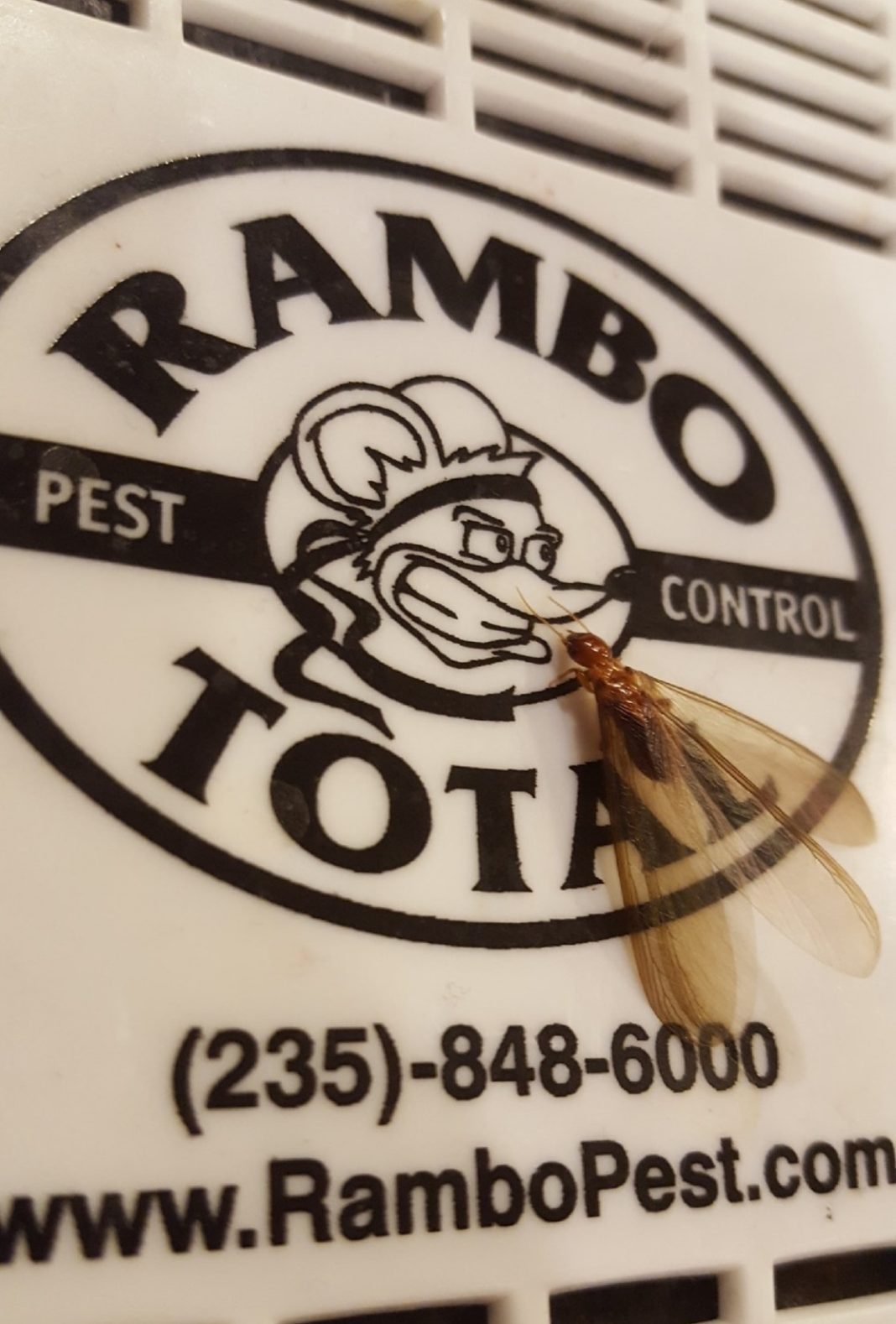Submitted by Rambo Total Pest Control
During late summer and early fall, moisture ants and dampwood termites often become more visible as they swarm in search of new nesting sites. Both of these pests are attracted to damp environments, making them a concern in areas with high humidity or water damage. Correctly identifying these insects, including their worker and reproductive castes, is essential for effective control. Here’s a guide to help you recognize and manage these pests:
Moisture Ants
Identification:
- Workers: Moisture ant workers are small, typically around 1/8 inch in length, and are yellowish to light brown. They have a rounded thorax, segmented antennae, and a heart-shaped head. Workers are the most commonly seen caste, as they are responsible for foraging and building the nest.
- Reproductive Caste (Winged Swarmers): Reproductive ants, also known as alates or swarmers, are larger than the workers and have a pair of wings on each side – one wing longer than the other. The males reproductives are smaller than the female reproductives and usually darker as well. These winged ants are usually dark brown to black and are usually seen during swarming events, which occur in late summer to early fall. They are responsible for starting new colonies.
- Habitat: Moisture ants prefer nesting in damp, decaying wood. They are often found in areas with water leaks, high humidity, or wood that is in direct contact with soil.
- Signs of Infestation: Key signs include small piles of sawdust-like debris and the presence of winged swarmers around windows or light fixtures. A coconut-like odor may also indicate their presence.
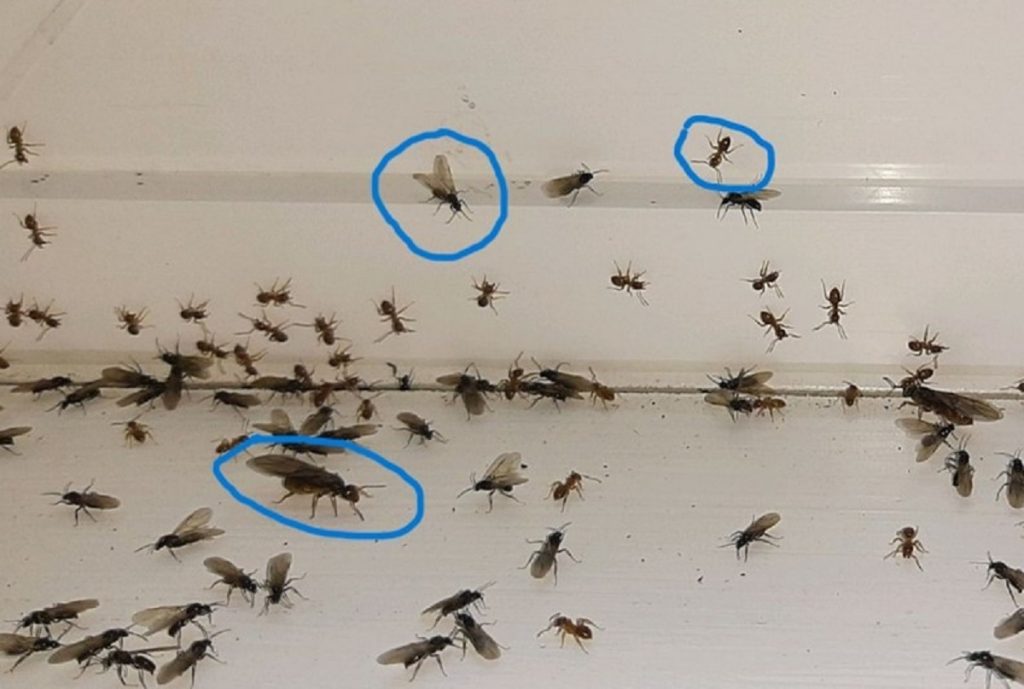
Control Measures:
- Eliminate Moisture Sources: Repair leaks, improve ventilation, and manage humidity levels in susceptible areas like crawl spaces and basements.
- Remove Damaged Wood: Replace rotting or water-damaged wood that could serve as a nesting site.
- Use of Insecticides: Sometimes moisture ants can import moisture to a nest site to create their own conducive conditions for future nesting habits. For this reason, sometimes it is advisable to treat with a residual insecticide in the area where nesting has previously occurred.
- Regular Monitoring: Inspect areas prone to moisture buildup regularly and keep gutters clean to minimize the risk of infestation.
Moisture ants are classified as a “secondary wood-destroying organism,” meaning they require a moisture condition in order to cause structural problems. Once they get started, though, they can cause significant damage to a home. Here are some photos of situations we have been called in to help with:
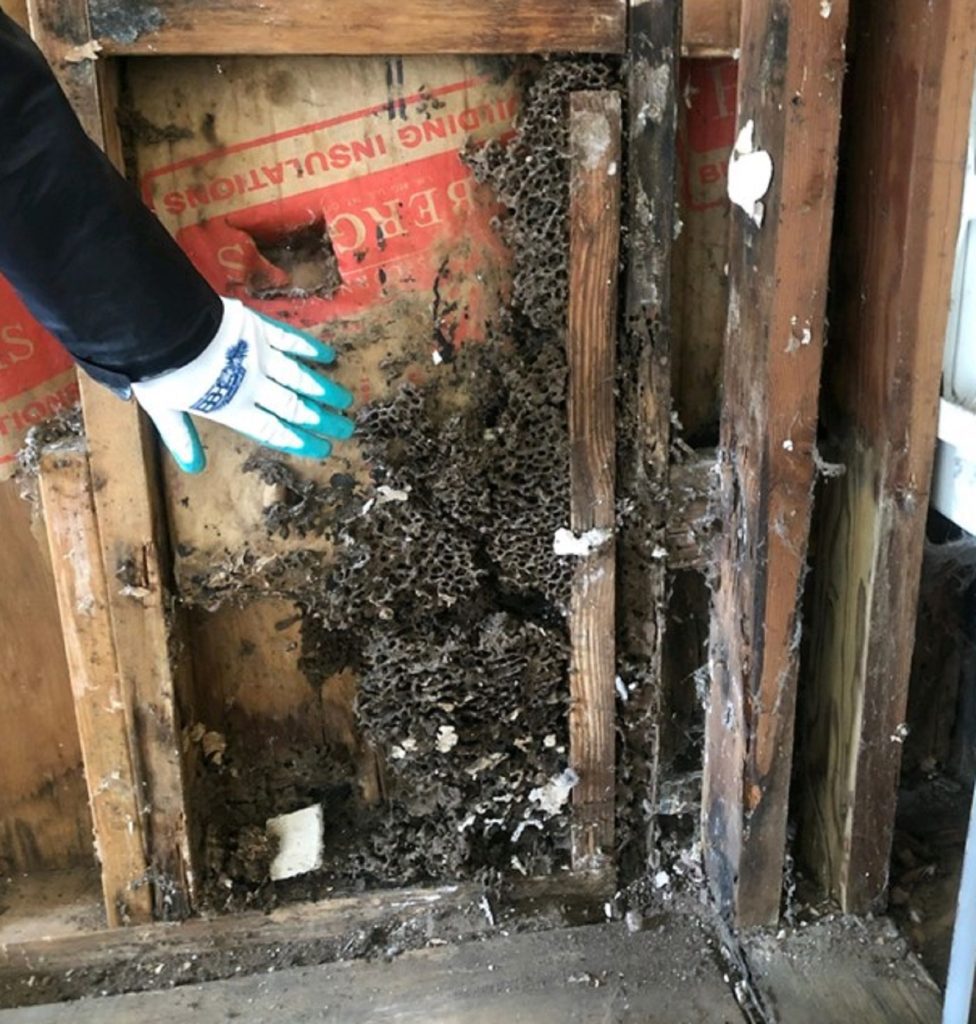
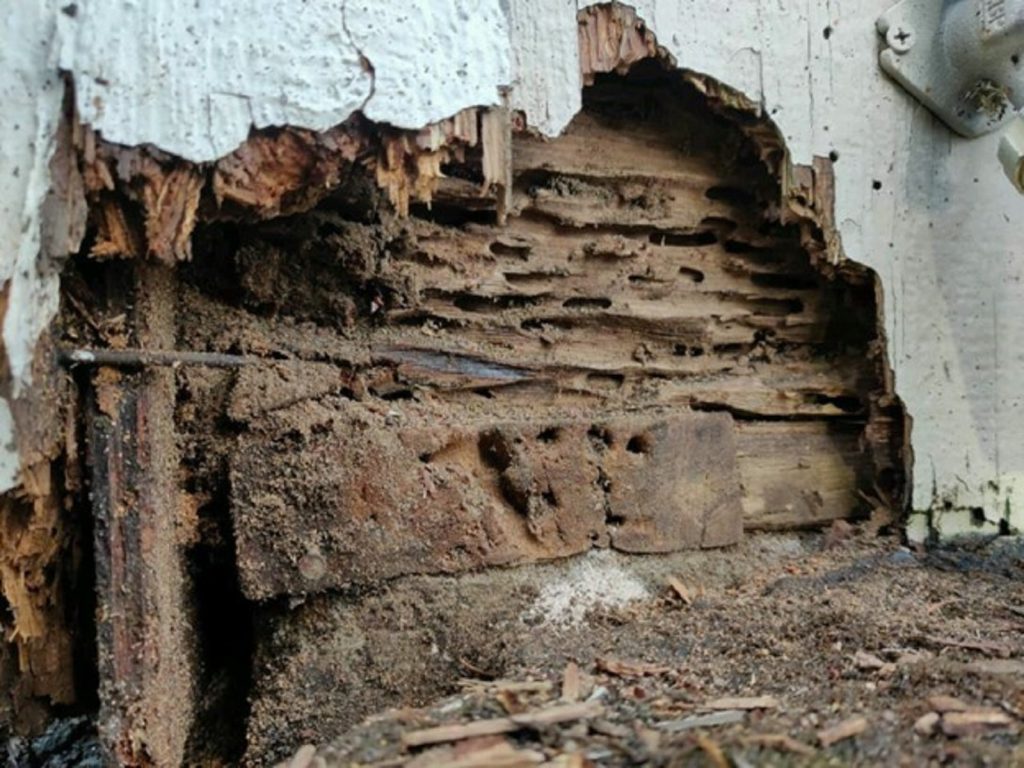
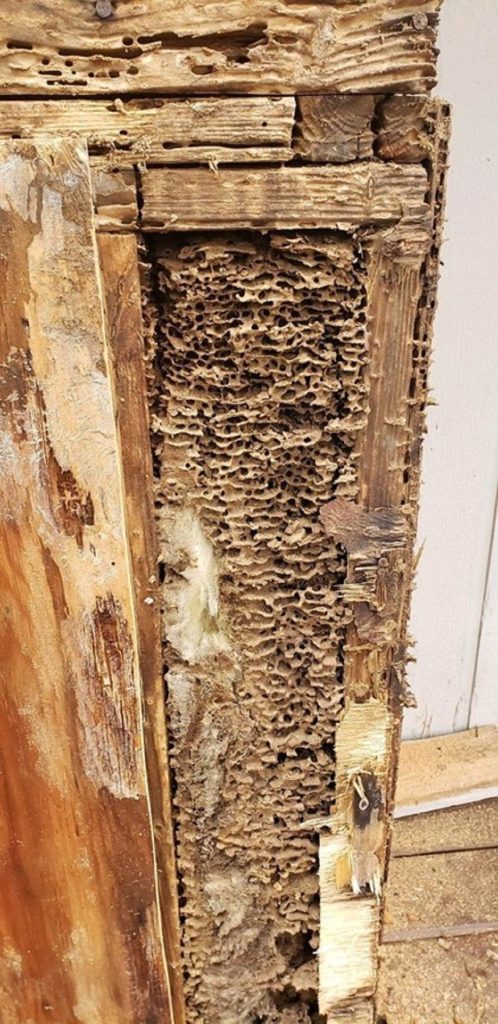
Dampwood Termites
Identification:
- Workers: Dampwood termite workers are cream-colored to light brown and are larger than those of other termite species, typically ranging from 3/8 inch to 1/2 inch long. They lack eyes and are soft-bodied, with distinctively large mandibles for chewing wood.
- Reproductive Caste (Winged Swarmers): Reproductives are larger, measuring about 1/2 inch to 5/8 inch in length, with a brown to reddish body. Alates have two pairs of wings that are equal in size and are tinted with a smoky color. They are typically seen swarming during warm, humid evenings in late summer and early fall. They are attracted to light, so it is not uncommon to find them near porch lights or making their way indoors through an open window or doorway.
- Habitat: Dampwood termites require very moist wood and are commonly found in areas with water damage. They do not need soil contact, making them prevalent in wooden structures with leaks or high humidity.
- Signs of Infestation: Indicators include the presence of winged swarmers, especially near windows and light sources, frass (pellet-shaped droppings), and wood that sounds hollow when tapped.
Control Measures:
- Address Moisture Issues: Fix leaks in roofs, plumbing, and walls to reduce moisture that attracts termites.
- Replace Infested Wood: Remove and replace wood damaged by termites. Use treated or naturally resistant wood in repairs to deter future infestations.
- Chemical Treatments: Typically not needed or recommended. Replacing any damaged wood and correcting the source of moisture is usually sufficient to gain control.
- Routine Inspections: Regularly check wooden structures for signs of damage or moisture, especially in basements, crawl spaces, and around the foundation.
Damage from dampwood termites can be costly. Here are some images demonstrating what they typically look like:
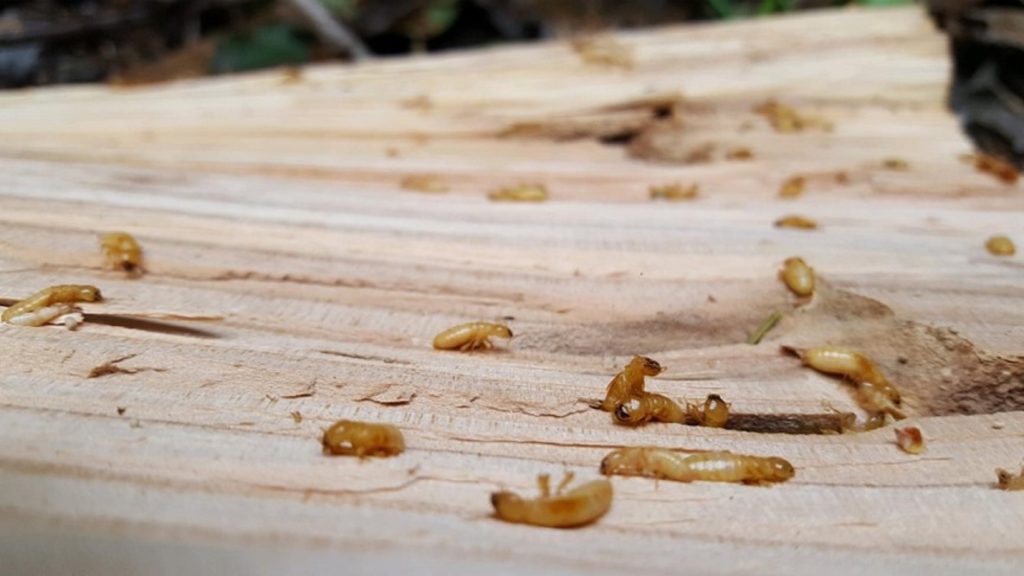
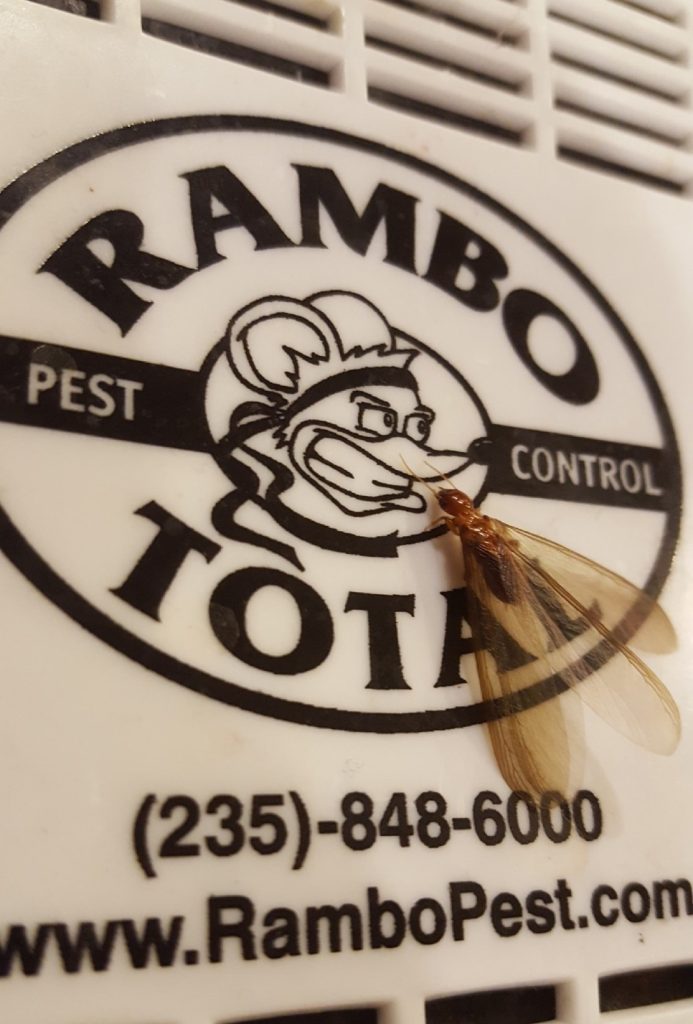
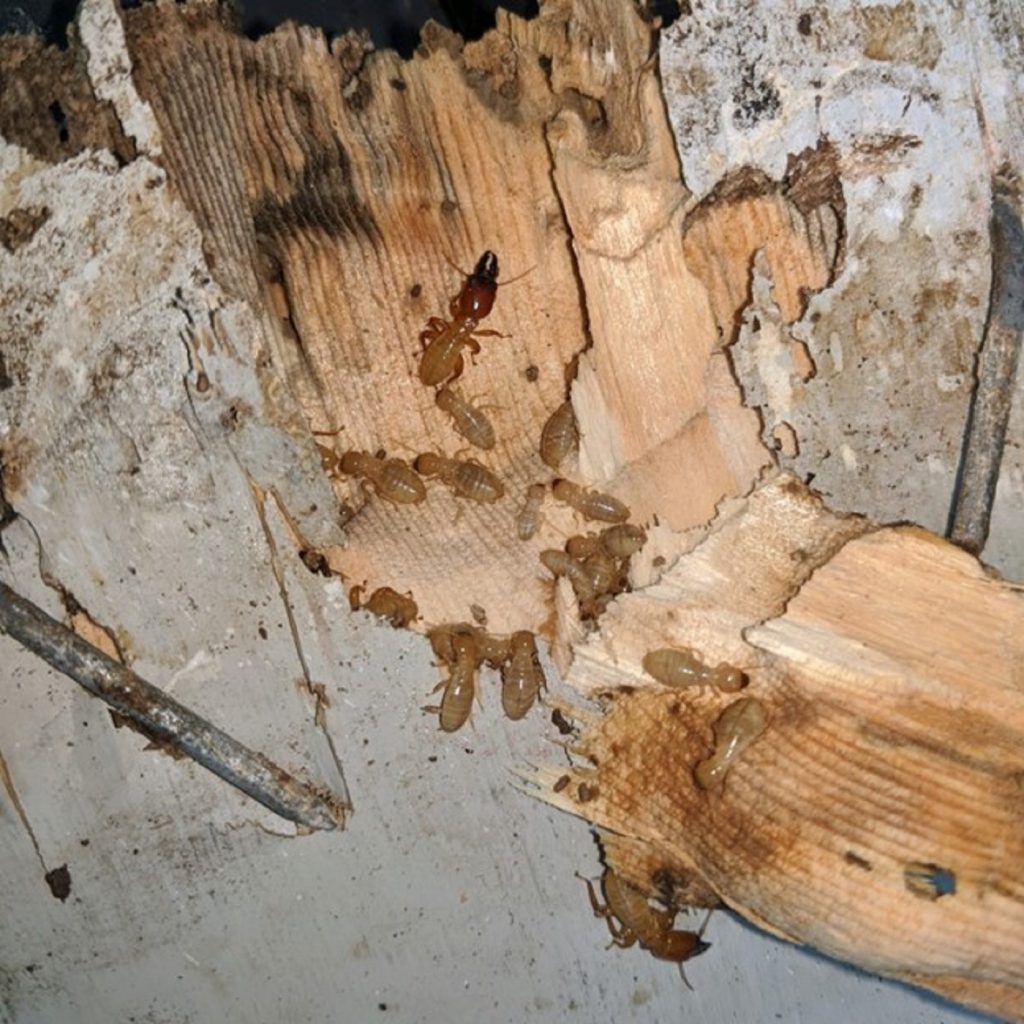
Preventing Future Infestations
To minimize the risk of future infestations of moisture ants and dampwood termites, maintain a dry and well-ventilated environment in your home. Address water damage promptly, and keep wood materials away from your home’s foundation. Regular inspections, combined with timely repairs, can help prevent these pests from establishing themselves in your home.
If you notice signs of moisture ants or dampwood termites, it’s best to consult a professional pest control service like Rambo Total Pest Control. Our experts can provide effective and long-lasting solutions to protect your home from these damaging pests.
Sponsored

































